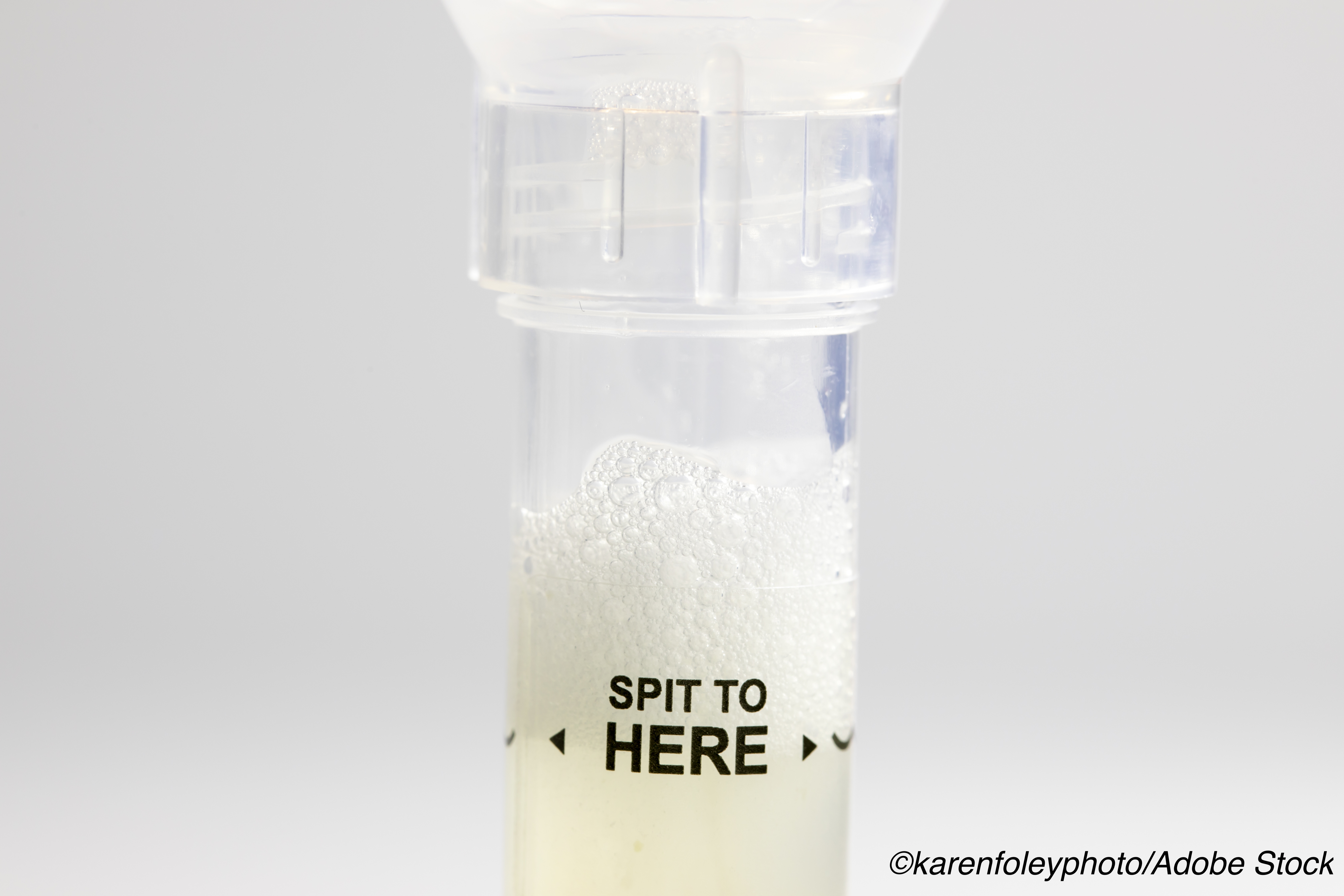Saliva testing for SARS-CoV-2 appears to be a viable alternative to nasopharyngeal swab testing, according to a letter to the editor in the New England Journal of Medicine.
The benefit of saliva testing is that it can be done by patients themselves — without interacting with health care workers — and negates the need for swabbing supplies and personal protective equipment, Anne L. Wyllie, PhD, from the Yale School of Public Health, and colleagues noted.
Wyllie and her colleagues tested 70 inpatients with Covid-19, confirmed by nasopharyngeal swab testing. During hospitalization, the patients collected their own saliva samples that were then compared with nasopharyngeal samples collected by health care workers.
“Using primer sequences from the Centers for Disease Control and Prevention, we detected more SARS-CoV-2 RNA copies in the saliva specimens (mean log copies per milliliter, 5.58; 95% confidence interval [CI], 5.09 to 6.07) than in the nasopharyngeal swab specimens (mean log copies per milliliter, 4.93; 95% CI, 4.53 to 5.33),” Wyllie and colleagues reported. “In addition, a higher percentage of saliva samples than nasopharyngeal swab samples were positive up to 10 days after the Covid-19 diagnosis. At 1 to 5 days after diagnosis, 81% (95% CI, 71 to 96) of the saliva samples were positive, as compared with 71% (95% CI, 67 to 94) of the nasopharyngeal swab specimens. These findings suggest that saliva specimens and nasopharyngeal swab specimens have at least similar sensitivity in the detection of SARS-CoV-2 during the course of hospitalization.”
Wyllie and colleagues also tested the nasopharyngeal swab specimens over time.
“The level of SARS-CoV-2 RNA decreased after symptom onset in both saliva specimens (estimated slope, −0.11; 95% credible interval, −0.15 to −0.06) and nasopharyngeal swab specimens (estimated slope, −0.09; 95% credible interval, −0.13 to −0.05),” they reported. “In three instances, a negative nasopharyngeal swab specimen was followed by a positive swab at the next collection of a specimen; this phenomenon occurred only once with the saliva specimens.”
Wyllie and colleagues noted that, over the clinical course, they saw less variation in the saliva specimens versus the nasopharyngeal swab specimens.
Further, they took saliva and nasopharyngeal swab samples from 495 asymptomatic health care workers.
“We detected SARS-CoV- 2 RNA in saliva specimens obtained from 13 persons who did not report any symptoms at or before the time of sample collection,” Wyllie and colleagues wrote. “Of these 13 health care workers, 9 had collected matched nasopharyngeal swab specimens by themselves on the same day, and 7 of these specimens tested negative. The diagnosis in the 13 health care workers with positive saliva specimens was later confirmed in diagnostic testing of additional nasopharyngeal samples…”
The researchers noted that their “findings provide support for the potential of saliva specimens in the diagnosis of SARS-CoV-2 infection.”
Candace Hoffmann, Managing Editor, BreakingMED™
Cat ID: 151
Topic ID: 88,151,254,930,791,932,730,933,190,926,192,927,151,928,925,934



Create Post
Twitter/X Preview
Logout